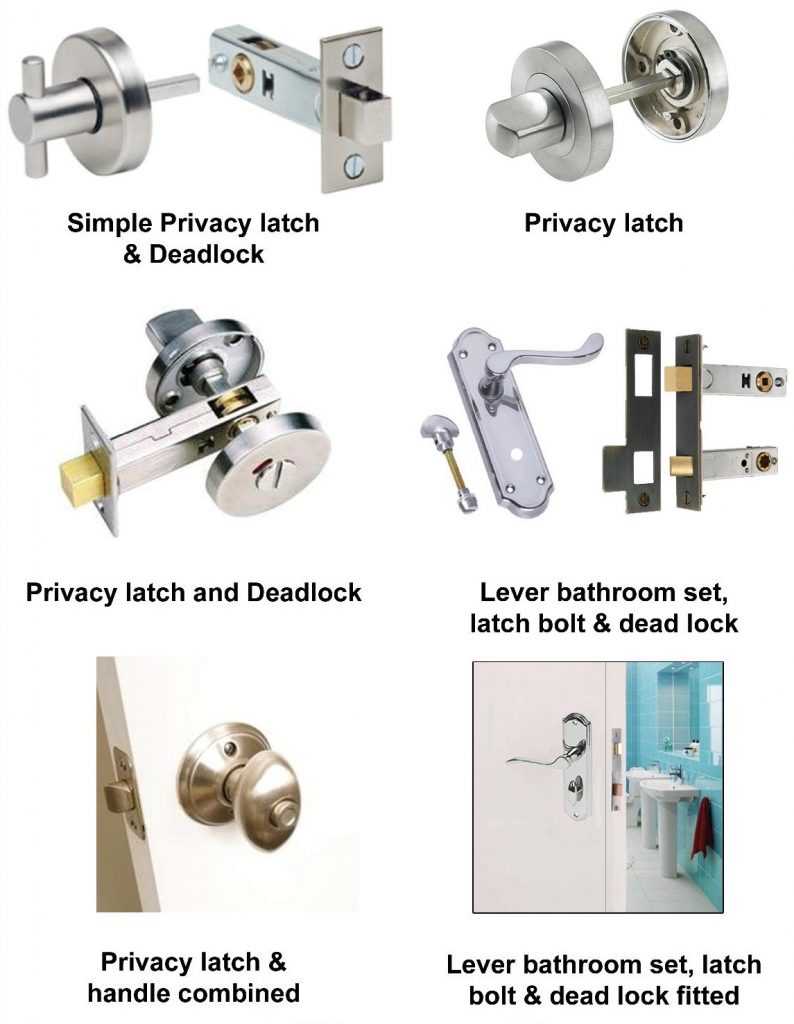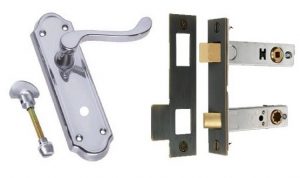What is a Privacy Door Lock?

A privacy door lock is exactly what you expect it to be, a simple lock mechanism that can provide an individual privacy when they are within a room. Most commonly you will see privacy locks in bathrooms, bedrooms or offices. In this Wonkee Donkee guide, we look at what are the different types of privacy door locks and how they work.
Privacy Latches

Before we start it is important to highlight what is a latch. A latch is not a lock, it is a mechanism that stops doors or windows from opening or closing.
Privacy latches come in many different forms. The simplest privacy latch is your standard push down door handle which is only opened by an individual applying force down on the handle which retracts the latch and releases the door. However, this is not really an ideal solution for an area such as a bathroom where you wish to have privacy as individuals may accidentally enter the room unaware that it is in use.

Next, are simply privacy latches. These can most commonly be found in public bathrooms; whereby there is no door handle on the front of the door, but on the back of the door a latch can be turned or slid into the strike plate on the door frame. This provides privacy for the user whilst the latch is extended and can also have a way of notifying other people that the lock is activated via an ‘Engaged’ or ‘Not Engaged’ sliding display.
In households or more private bathrooms, it is much more common to see a combination of both of these latch systems – especially in older houses. The combination allows users to use a handle on both sides of the door as well as have secured privacy when the latches are extended.
In terms of security, this combination is only suitable for providing privacy and provides very little due to the ease in which the lock can be manipulated from the outside. The lock mechanisms usually have a groove on the outside of the door which can be turned using a coin allowing people on the outside of the door to unlock the mechanism. However, this does bring about some advantages as it is helpful for properties where there are children or vulnerable people who may lock themselves in rooms and need assistance.
Privacy Lock

Probably the most commonly used privacy mechanisms for bathrooms in homes is the privacy lock. If you saw one of these you would instantly recognize what a privacy lock is. Privacy locks are a 2-in-1 mechanism and consist of a door handle or knob that includes a locking mechanism. There are several different ways in which these work however we will only cover the two most common mechanisms as most other designs are only slight variations on this design.
The first privacy lock mechanism is a simple door handle that has a button in the center of the knob on the internal side of the door. Once you have closed the door, you simply press in the button which secures the latch in place. If anyone on the external side of the door tries turning the knob the latch will not release and the door will remain closed. To unlock the door, simply press in the button again to release it or turn the doorknob from the internal side in the direction away from the door frame and the latch will be released.

The second type of privacy lock act in the same way, the only difference is the way in which the latch is extended and retracted. These mechanisms use a simple door handle which when pulled up from the inside of the room the latch will extend and lock in place. This will prevent individuals from outside from being able to use the door handle and enter the room. To release the latch, simply revert the door handle to the sideways position and push down to open the door.
Typically, these privacy locks provide a reasonable amount of security when they are in use and are more secure than simply privacy latches. In cases where you may have vulnerable people or children using the facilities, some of these lock mechanisms can have a small hole within them that can be pressed from the outside with a very thin rod in order to release the latch.
Deadlocks

A deadlock is simply a lock that requires a key to be used in order to open it. Most typically for privacy deadlocks the key will be on the internal side of the door and can be locked by an individual by turning it. This works as a normal lock does and extends the bolt outwards into the strike plate and prevents individuals from outside entering the room.
You can also use more generic deadlocks that come fitted within most doors when manufactured. In this case, the key will work from both sides of the doo; however, you will tend to leave the key on the internal side which will prevent access to anyone from the outside even if they have a key.
Both of these deadlock options provide a large amount of security. On the other hand, if you are looking at installing a privacy locking system in a property where children or vulnerable individuals will be using the facilities they can be difficult to bypass in cases of emergency – so they are unlikely to be suitable.






